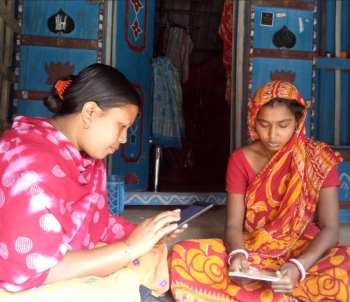Assessing the multi-sectoral convergence of interventions impacting nutrition at the household level: Lessons from Sundarbans, West Bengal, India
Abstract
Background: Malnutrition is a multifaceted problem requiring interventions that address the multi-sectoral determinants contributing to it. As per National Family Health Survey - 5 (2019-21), with 33.8% stunted, 20.3% wasted, and 32.2% underweight children, West Bengal is one of the high burden states for childhood undernutrition in India.
Objectives: The objective of the study was to assess household-level access (i.e. the percentage of households availing select services) to various nutrition-specific and nutrition-sensitive interventions and understand the extent to which convergent action has taken place in the most hard-to-reach areas of the Sundarbans.
Methods: Cross-sectional survey following 30 x 30 cluster sampling; the sampling was done based on population proportion to size (PPS) methodology. A total of 912 households were recruited for a quantitative survey, and the data was collected through computer-assisted personal interview (CAPI) tools. Data was collected from October 15-25, 2021 from households having at least one child in the age group of 6 – 24 months.
Result: The study focused on 19 nutrition-specific and sensitive interventions. Household-level coverage of 13 of these interventions was 1.5%; coverage of the six others was 4.2%. The estimated coverage of all 19 interventions was found to be almost non-existent (0.2%).
Conclusion: The conspicuously low coverage of services at the household level is a clear indicator of poor convergence of government schemes and programs, reflecting, in turn, disjointed action on the part of the various departments of the government. The results suggest the need for reconsidering the household-level delivery of services as a wholesome package of interventions rather than seeing them as discrete departmental deliverables.

Authors retain all copyrights. In making a submission to World Nutrition, they are certifying that all material is theirs except quotations, as indicated, and that they have obtained permission for any photos, tables, or graphics taken from other publications or websites.




